There is a lot of activity on contractor Flaskamp’s extensive premises in Rheda-Wiedenbrück (Northern Germany), but it is not hectic. “We have a few days to take a breather between the barley and wheat harvest,” explains Jannik Brüggershemke. He came to Flaskamp as a temporary worker and now supports the owner Daniel Groteheide – working mainly in the management team’s spacious and modern office.
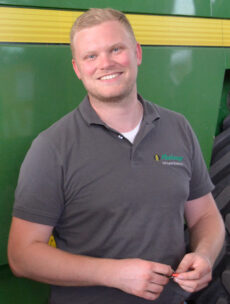
Jannik Brüggershemke
We offer our customers holistic concepts.
Jannik Brüggershemke
Demand for yield Mapping
The Flaskamp contracting business was founded in 1911. In addition to agricultural and municipal services, it sells agricultural inputs, and offers soil analysis and agronomic advice. “We are not classic machinery contractors, instead we offer our customers a holistic approach,” says Mr Brüggershemke.
In addition to the location in Rheda-Wiedenbrück, the company has another branch in Könnern (Eastern Germany). Although the number of customers is relatively low, Flaskamp manages large areas for them.
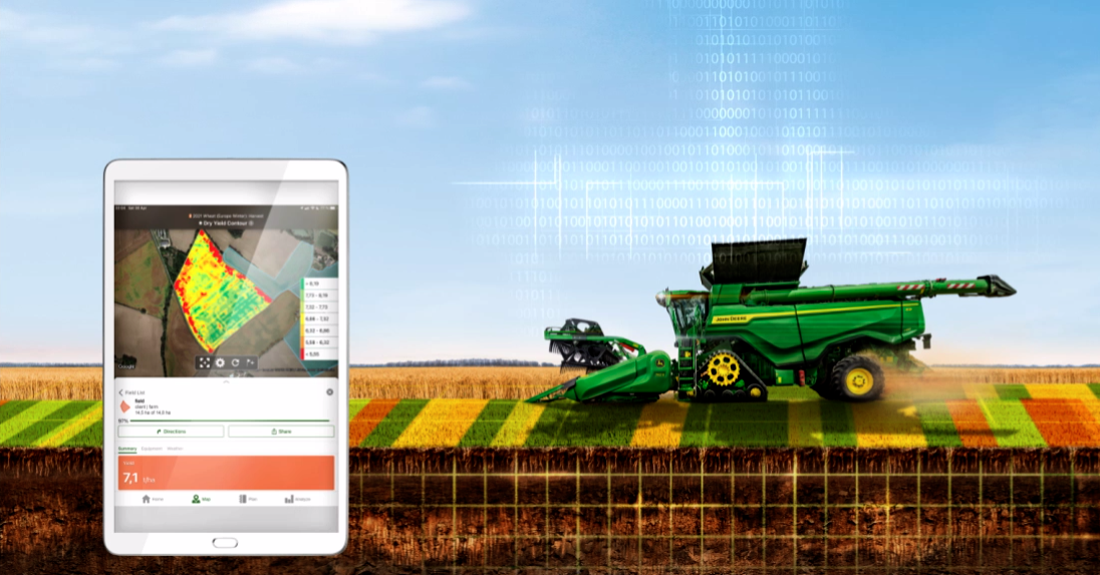
You want to boost your harvest potential?
Visit the John Deere smart farming solutions website to learn how our precision agriculture technologies will take your harvesting to the next level.
It was this branch’s customers who first asked for yield mapping, and so initiated the purchase of the first near-infrared (NIR) sensors for forage harvesters more than 10 years ago. From there, precision farming slowly spread to the traditionally smaller-scale farms in the contractor’s homeland.
Monitoring success
For Mr Brüggershemke, precision farming starts with the guidance system. After all, the best map doesn’t help if you do not know your exact position. In addition, all the customers’ fields – several thousand in total – are stored in the MyJohnDeere portal. All the work done for a customer is documented and the corresponding site-specific agronomic data are available to the contractor an customer. Precision farming tasks include sowing maize, sugar beet and potatoes, as well as spreading lime, mineral fertilisers and slurry.
When harvesting grass, maize, and cereals, both the yield and quality are recorded for each field. “This means we have success monitoring and basic information for creating new application maps,” says Mr Brüggershemke. In addition, biomass maps, soil sample analysis and, finally, the farmer’s knowledge and experience go towards creating application maps – regardless of the task at hand.
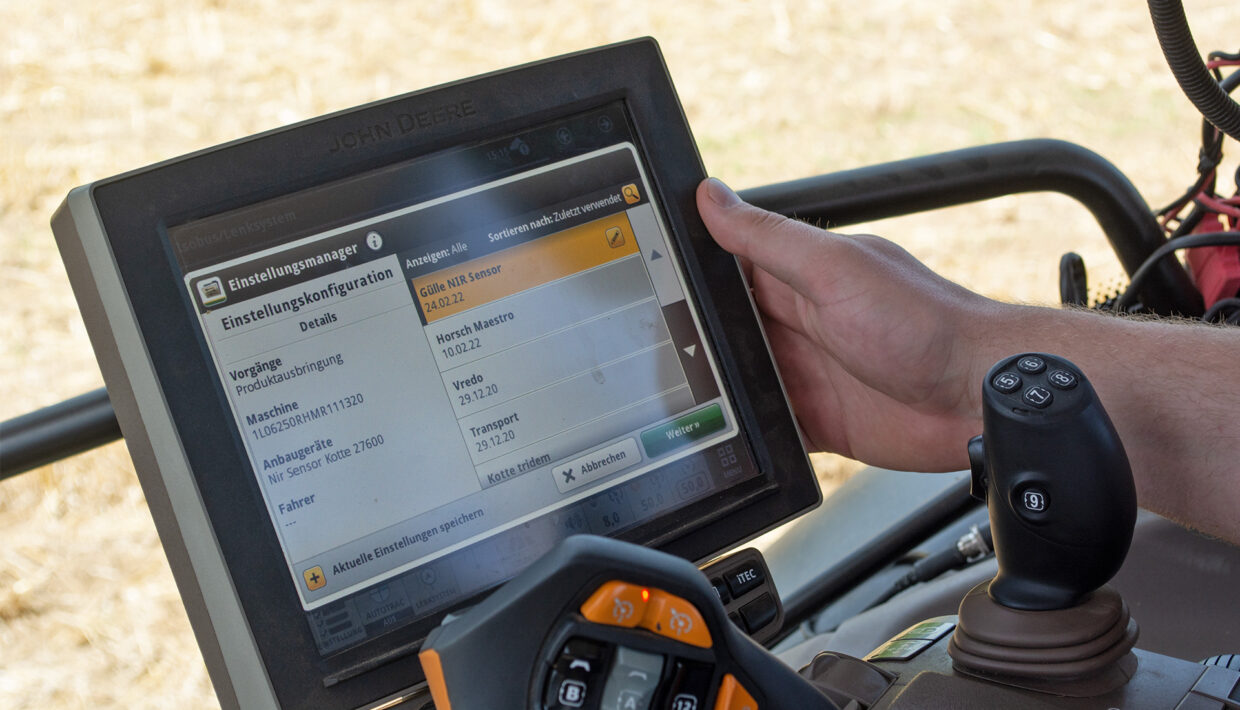
The basic settings for each implement are stored on a master USB stick and available on all of contractor Flaskamp’s tractors.
precisely drilled maize
Not everybody demands precision farming. However, for many customers planting maize is a first step as it’s usually carried out by contractors. Mr Brümmershemke estimates that 60% of customers precison drill their maize, but only 20% do so with their own machines.
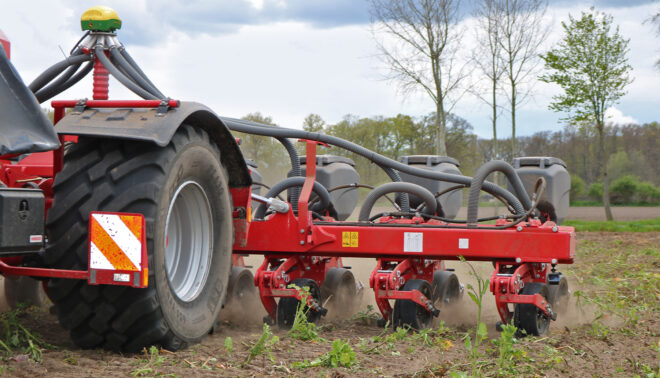
Flaskamp contractors precision drilling maize at Stefan Vogelsang’s farm.
Farmer and Contractor working hand in hand
One of the customers who works closely with Mr Brüggershemke and his team is Stefan Vogelsang. He manages a 160ha mixed farm with dairy cows and pigs. He outsources maize sowing to the contractor, because buying his own maize drill would not pay off. He also uses Flaskamp for harvesting grain and all of his forage.
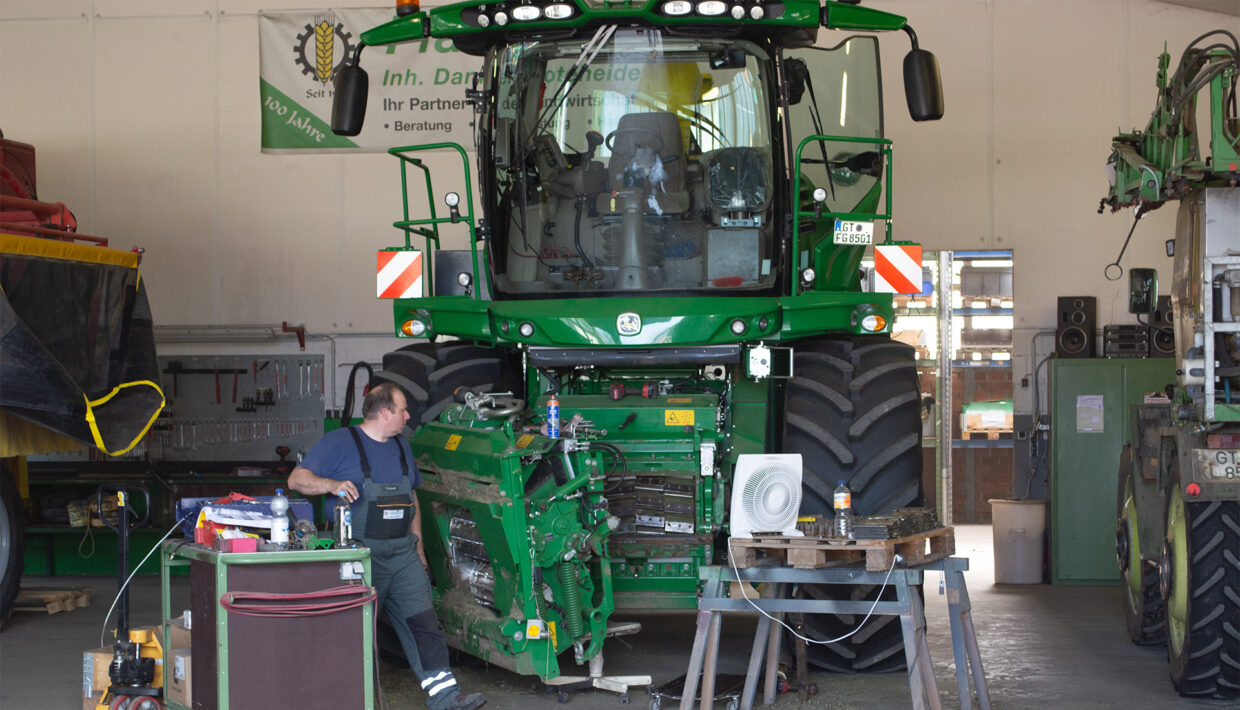
Before harvest, all self-propelled forage harvesters are thoroughly serviced.
Mr Vogelsang creates the application maps for sowing maize with seedbed fertilisers using yield and biomass maps from the previous years, as well as soil type maps and soil nutrient analyses. Where the soil has a high proportion of clay, it does not always create a fine and crumbly tilth, so the seed rate is increased in these areas. On the other hand, on sandy soils there is often not enough water available. To reduce competition for water among individual plants the seed rate is reduced accordingly.
precise documentation
Since Mr Vogelsang also uses John Deere’s Operations Centre, the data can be easily exchanged between the two companies. However, before the data is forwarded to the tractor, Mr Brüggershemke takes a final careful look to check if all the data is correct, to ensure smooth sowing. Having precise data for all his tasks and application rates available is particularly beneficial for Mr Vogelsang, since he serves as model farmer under his state’s Water Framework Directive, which relies on precise documentation and subsequent evaluation.
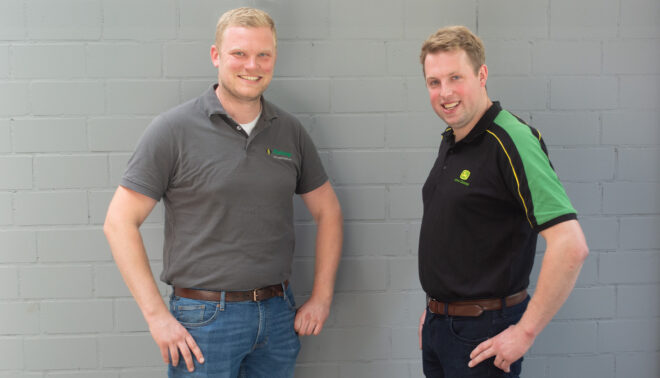 Support from the dealer
Support from the dealer
Creating fields and application maps in the Operations Centre, transferring data and setting up and operating variable rate implements requires experience. Florian Schalück from the John Deere dealer Deppe & Stücker actively supports his customers in all these tasks. He offers various training classes in which both contractor employees and interested customers can learn how to use the John Deere display, the MyJohnDeere portal and variable rate machines.
In addition, Messrs Schalück and Brüggershemke have further optimised workflows. For example, the basic settings and assignment of selective control valves in the tractor cab are defined once for each implement and saved on a master USB stick. When a new tractor arrives, these basic settings are transferred immediately. They also colour code hydraulic hoses using cable ties, making it much easier for employees to assign them to the control valves when coupling.

